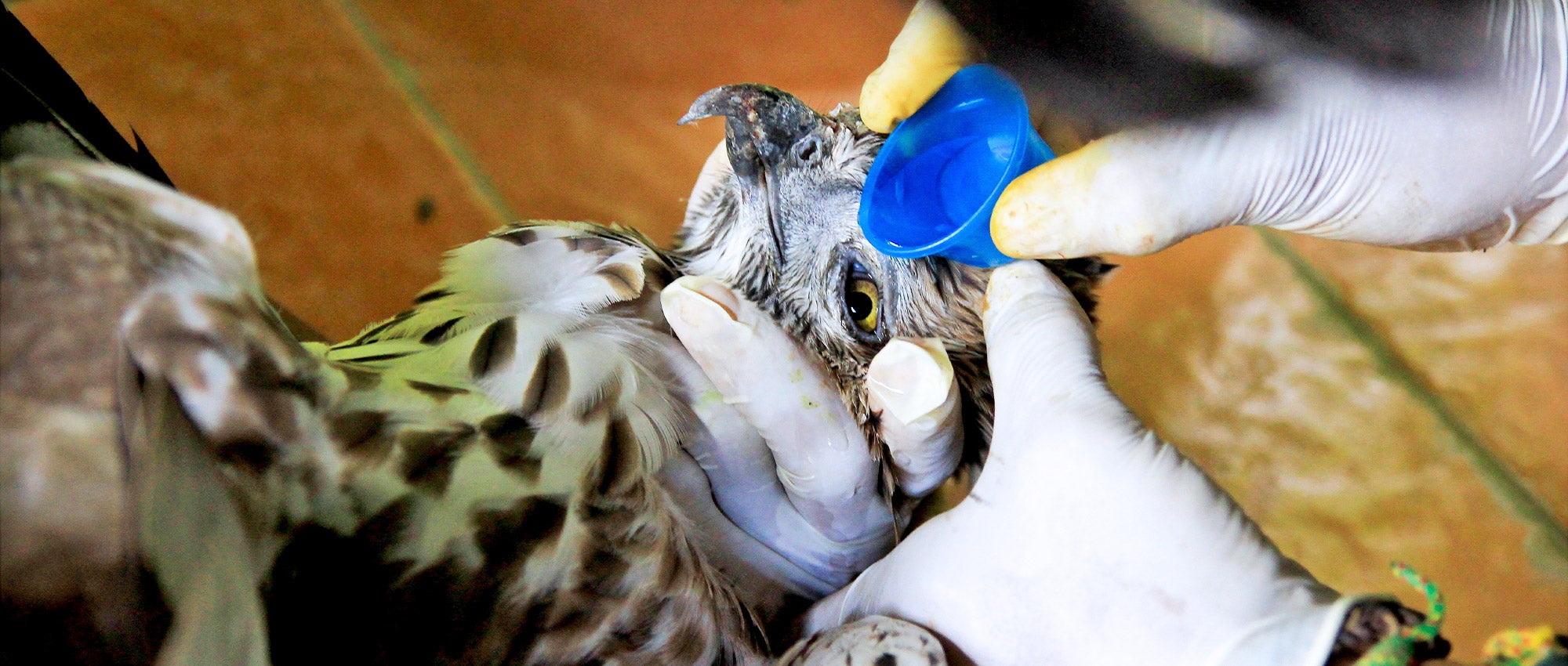The Role of Burlington Wildlife Rescue in Sustaining Endangered Species
The Role of Burlington Wildlife Rescue in Sustaining Endangered Species
Blog Article
The Function of Humane Wildlife Removal in Protecting Citizen Ecosystems
Humane wildlife removal is not just a moral consideration however a pivotal element in guarding local ecological communities. By prioritizing non-lethal techniques, it attends to the fragile balance between human growth and wild animals environment conservation. This approach not only alleviates problems yet also ensures the sustainability of biodiversity. Yet, the performance of these strategies warrants even more assessment, specifically in city setups where human-wildlife communications are increasingly intricate. As we consider the ramifications of our techniques and their effect on environmental harmony, one need to wonder about just how these techniques can be maximized to cultivate a more cooperative partnership with nature.
Recognizing Human-Wildlife Problems
Human-wildlife conflicts usually emerge when the natural environments of animals converge with human tasks, leading to competition for resources and area. As urbanization and agricultural expansion remain to intrude upon wild animals areas, animals such as prairie wolves, raccoons, and deer locate themselves in closer closeness to human populations. This proximity can cause damaging influences on both wild animals and humans, as animals may create damage to plants, framework, and personal effects while people might accidentally hurt wildlife via habitat devastation and various other anthropogenic pressures.
The complexity of these problems comes from a range of elements. Changes in land usage, environment modification, and the fragmentation of ecosystems often compel wildlife to adjust to new atmospheres, in some cases leading them right into commercial or domestic locations. In addition, the availability of human-generated food sources, such as rubbish and animal food, can draw in wild animals to human settlements, exacerbating interactions and potential disputes.
Attending to human-wildlife problems requires a nuanced understanding of animal actions, environmental dynamics, and socio-economic considerations. By examining these interactions, guardians and policymakers can establish strategies that intend to mitigate conflicts while protecting biodiversity and preserving eco-friendly equilibrium. The goal is to promote coexistence and lessen negative effect on both human areas and wild animals populaces.
Relevance of Non-Lethal Approaches
Non-lethal approaches of wildlife elimination symbolize this ethos by offering solutions that protect against harm to wildlife while addressing human problems. By utilizing such strategies, we can take care of wildlife communications without resorting to lethal actions, thereby maintaining animal populaces and decreasing honest concerns connected with murder.
These methods frequently prove extra efficient in the lengthy term, as getting rid of individual pets can create a gap that is rapidly loaded by various other members of the varieties or various types altogether. This can lead to a cycle of recurring removal initiatives, whereas non-lethal deterrents deal with the origin causes of wild animals presence.
Additionally, non-lethal approaches foster conjunction by informing the public concerning wild animals behavior and motivating harmonious living techniques. This understanding can result in more lasting human-wildlife interactions, ultimately securing both area passions and pet well-being.
Benefits for Biodiversity
When non-lethal wild animals removal approaches are utilized, they add dramatically to biodiversity conservation. By ensuring the risk-free relocation of animals instead of their eradication, these techniques preserve environmental equilibrium and safeguard the stability of communities. Gentle techniques lessen disruptions to regional animals, enabling indigenous types to grow. This preservation is crucial as each varieties plays a distinct duty, typically as pollinators, killers, or victim, which jointly maintain ecosystem performance.

Additionally, these methods cultivate conjunction in between humans and wild animals, minimizing negative communications and maintaining the rich tapestry of life that characterizes biodiverse areas. This approach encourages a much deeper understanding and respect for wild animals, promoting area assistance for conservation initiatives. Ultimately, gentle wildlife removal is a crucial component in guarding biodiversity, making sure communities remain lively and functional for future generations.
Techniques for Reliable Removal
Carrying out effective techniques for humane wildlife elimination requires a detailed understanding of pet behavior and environment demands. This knowledge acts as the foundation for creating methods that make certain the ethical and risk-free moving of wild animals. One main method includes performing thorough analyses of the afflicted area to determine the species existing and the particular obstacles they posture. This assessment assists in creating customized strategies that minimize tension and harm to the pets.
Another important method is utilizing exemption strategies, which concentrate on securing entrance points to stop pets from going back to structures. This method not only attends to the instant problem but also functions as a long-term solution, decreasing future conflicts between people and wildlife. The usage of non-toxic deterrents and repellents can encourage animals to abandon locations voluntarily, enhancing other elimination initiatives.
Capture and relocation should constantly be a last resort, employed just when animals pose a straight risk or are incapable to leave on their own. In such cases, using humane catches and ensuring the release of pets in suitable environments are important to guarding their welfare. Cooperation with wildlife specialists and adherence to legal laws even more boost the efficiency of these approaches.

Encouraging Conjunction in Urban Locations
Promoting coexistence in metropolitan locations calls for a multifaceted method that stabilizes human growth with the needs of regional wildlife. As urbanization remains to expand, it is vital to apply techniques that alleviate human-wildlife problems while maintaining biodiversity. Urban policymakers and coordinators must integrate environment-friendly spaces, such as parks and wildlife corridors, right into city designs to offer environments for indigenous varieties. These locations not just sustain wild animals however additionally enhance the high quality of metropolitan life by enhancing air quality and offering leisure rooms for citizens.
Education and understanding projects are crucial in promoting a culture of coexistence. Residents need to understand the importance of wildlife and the duty they play in regional ecological communities. Workshops and informational sessions can outfit areas with expertise on exactly how to reduce conflicts, such as safeguarding trash and using gentle deterrents to avoid wild animals invasion.
Moreover, modern technology can play a considerable role in promoting conjunction. The usage of wildlife monitoring systems, for instance, can help track animal activities and inform city planning choices. Collaborations in between environmental organizations, regional governments, and neighborhood teams can even more reinforce these efforts, making certain that metropolitan growth progresses sustainably while appreciating the ecological balance.
Verdict
Humane wildlife removal is important for keeping ecological balance and biodiversity by using non-lethal methods that minimize injury to animal populations. Comprehending human-wildlife conflicts and carrying out approaches such as exclusion strategies and environment modification can successfully manage these encounters. Such techniques sustain the conservation of native species and their environments, enhancing neighborhood interaction and recognition. Inevitably, promoting coexistence in metropolitan areas promotes an unified connection in between people and the all-natural setting, ensuring lasting environments for my review here future generations.
As urbanization and agricultural growth continue to encroach upon wild animals regions, pets such as deer, see here raccoons, and prairie wolves locate themselves in closer distance to human populations. Non-lethal methods of wild animals elimination embody this ethos by giving options that stop harm to wild animals while attending to human issues. By employing such strategies, we can take care of wildlife interactions without resorting to deadly steps, thereby maintaining animal populations and reducing moral issues associated with murder.
Executing effective methods for humane wild animals removal calls for a detailed understanding of animal habits and habitat demands.Humane wildlife elimination is vital for maintaining environmental equilibrium and biodiversity by utilizing non-lethal approaches that minimize injury to pet populaces.
Report this page